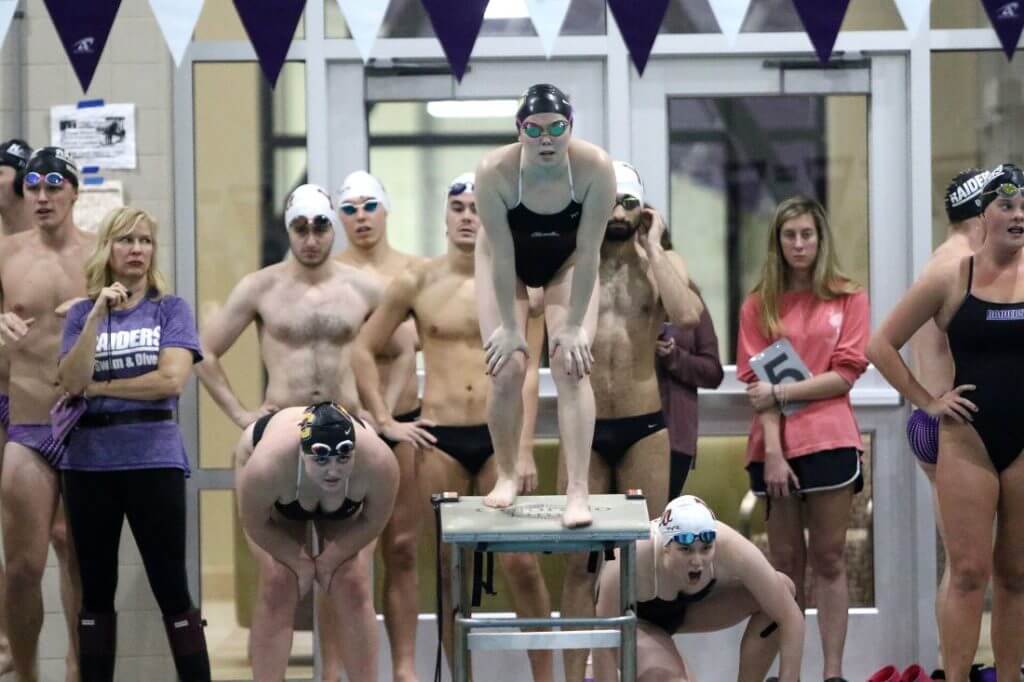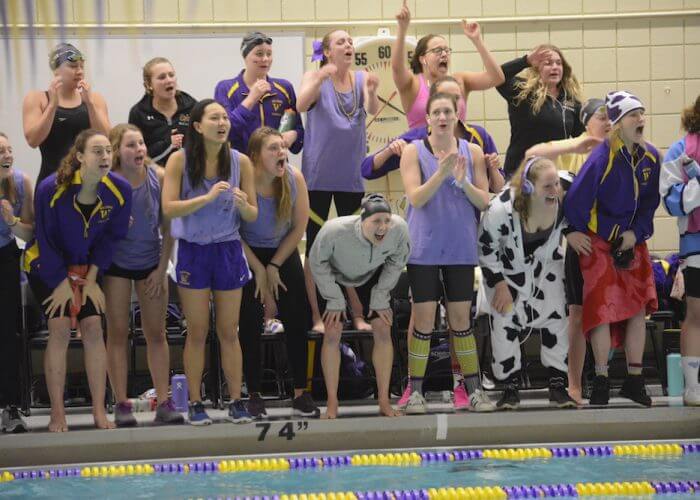A Look at the Differences Between American and Australian College Swimming

A Personal Look at the Differences Between American and Australian College Swimming
By Tara Draper, Swimming World Intern
College swimming is a breed unlike all others. It’s such a different environment from Australian swimming, and I was often very confused by the entire concept. Traveling over to the U.S. for college was one of the biggest decisions of my life, and also brought about one of the biggest learning curves I was ever going to face.
Coming from Australia, I only ever swam at the club level. One major difference I have noticed between American and Australian swimming, at least at the amateur level, is the team environment. In Australia, you swim mainly for a club team and sometimes swim for your school. Your main coach is your club coach, and some high schools don’t even have a coach. In the U.S., your main coach tends to be your college or, in some situations, your high school coach.
It seems to me that there are also fewer swimmers who continue to train once they reach adulthood in Australia. This also leads into the amount of control a coach has over your events. I never had my coach tell me which events to swim and I never had him enter me into events. Once I reached college though, my coach entered me in all of my events. In the first meet I swam for Oberlin College, my coach entered me into the 400 IM and I nearly fell over from shock. I had never swum the event before and was not excited for the prospect. Honestly, I like the idea of having control of my events, but I do like having the team all swim together at one meet, as it really creates a cohesive team energy, unlike anything I experienced back home.

Photo Courtesy: Kris Dufour/Williams College
In America, college meets are generally team vs team. You have a conference, which is a collection of schools, and you race against other colleges inside and outside your conference. Everyone on the team swims, and you’re all there to cheer on your teammates. Teams collect a bunch of wins and losses, and at the end of the season, there is a big conference meet, where all the teams in the conference come together at one team’s pool to race. In Australia, meets are generally hosted by one team as a fundraising event, and individuals enter the meet rather than teams facing each other. This setup also means that only the people who are competing at that meet are there. Sometimes, I would be the only one from my team at a meet. Our big season-ending meet is a state or national championship, and you only go if you qualify. I really like having my entire team at meets, so I am able to really get to know them, how they swim and know that they are there to support me as well.
One of my favorite memories of a meet here in the U.S. was actually that 400 IM. I was exhausted and in the breaststroke leg, my asthma was really bad and I was struggling to breathe. But as I got closer to the far wall, on the first length of breaststroke, I could see my teammates standing at the end of my lane screaming at me to go faster. I could feel the energy in the air and that helped me to push myself to go faster. This would never happen at a meet in Australia, as swimmers aren’t really allowed to be on deck if they aren’t swimming. Also, because meets don’t happen team vs team, I would have at most five teammates at a meet with me. Having this support from my new teammates definitely helped to push me to go faster, and I very much like the environment at meets here in America.
Another difference that confused me, and honestly still does, is America’s patriotism. At every single swim meet that I have competed for my college team, the national anthem is played before the beginning of the meet. But because everyone knows it’s coming they don’t ask people to rise or anything, it’s just played before the first event (which is usually a relay event). I’m also usually in that relay, so I’m standing behind the blocks getting ready and the national anthem begins to play. Every time, I have to jump up and try to find the American flag hanging on the wall. By the end of my first season, I was no longer surprised by Star-Spangled Banner’s opening bars, but it must have been quite funny watching me spin around trying to find the flag.
By far the most painful difference for me is the change of direction in the pool. In Australia, we swim on the right side of the lane. In America, they do everything counter-clockwise, meaning they swim the other way around the lane. They drive on the other side of the road, and they walk on the other side of the sidewalk. I cannot count the number of times I have swum into the lane line at swim practice or nearly walked into someone because I wasn’t paying attention when I was walking somewhere. I had bruises on my right elbow for a month when I first got here, and I ended up cutting my elbow on the lane line so much that the athletic trainer just gave me a bottle of liquid skin to take to meets with me.
Another difference between American and Australian swimming that both makes sense and confuses me, is the emphasis on championships. In Australia, you are constantly trying to make cut times for state or national championships, and so it is important to swim fast every weekend. You put on a racing suit for every meet. In America, you’re not trying to make championship cut times every weekend, and as a result, you don’t put on a racing suit for meets except for conferences and one midseason invite meet. Your training also doesn’t decrease for meets, which means you go into meets tired, but your body comes out stronger for it. I like the way college swimming works because I know that my entire team is struggling with the sets and it really brings the team together.
One of my favorite things about college swimming is something unique to America. Teams have their own sports trainer to help with stretching, giving them rehab exercises and just general loosening out. They also have ice baths and warm water whirlpools for when you need those too. These trainers are generally shared by a few teams at the college, but the idea of having a dedicated person on campus who can help me with any swim related ache is really nice. This is not something that exists in Australia so I really do count myself lucky to have a trainer to help me.
I really enjoy being a collegiate athlete and although the differences exist and it took me a while to wrap my head around things, I like the way things work. My team is my family that has helped me through many tough times, COVID included. I couldn’t ask for a better family.




Madison Tellier’s freshman year, she was so excited to find out that even in D3 the swim team had an athletic training to stretch them out.
That’s lovely! The athletic trainers are really a godsend!
In Australia we swim on the left side of the lane, it’s only the right side of the lane if you consider it as the correct side
Well done Tara making the transition, Conor May be asking for your help in a few years. Stay safe.?????
Love this, its a brilliant article Tara, the tips and advice you’ve given me As an international student on my journey towards collegiate swimming have been so helpful???
in Australia we swim on the left side of the lane. How do you not know this?